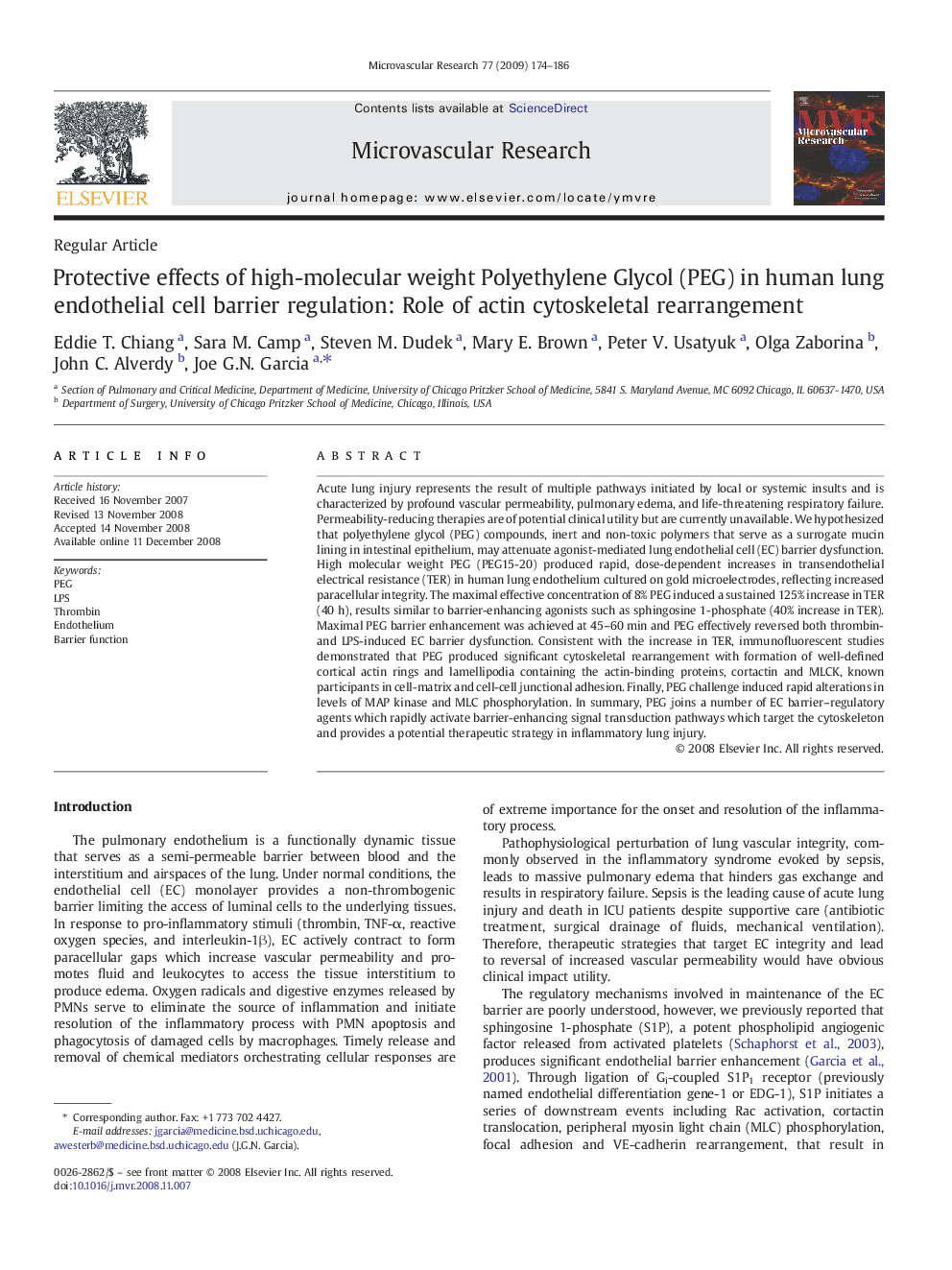| کد مقاله | کد نشریه | سال انتشار | مقاله انگلیسی | نسخه تمام متن |
|---|---|---|---|---|
| 1995238 | 1064958 | 2009 | 13 صفحه PDF | دانلود رایگان |

Acute lung injury represents the result of multiple pathways initiated by local or systemic insults and is characterized by profound vascular permeability, pulmonary edema, and life-threatening respiratory failure. Permeability-reducing therapies are of potential clinical utility but are currently unavailable. We hypothesized that polyethylene glycol (PEG) compounds, inert and non-toxic polymers that serve as a surrogate mucin lining in intestinal epithelium, may attenuate agonist-mediated lung endothelial cell (EC) barrier dysfunction. High molecular weight PEG (PEG15-20) produced rapid, dose-dependent increases in transendothelial electrical resistance (TER) in human lung endothelium cultured on gold microelectrodes, reflecting increased paracellular integrity. The maximal effective concentration of 8% PEG induced a sustained 125% increase in TER (40 h), results similar to barrier-enhancing agonists such as sphingosine 1-phosphate (40% increase in TER). Maximal PEG barrier enhancement was achieved at 45–60 min and PEG effectively reversed both thrombin- and LPS-induced EC barrier dysfunction. Consistent with the increase in TER, immunofluorescent studies demonstrated that PEG produced significant cytoskeletal rearrangement with formation of well-defined cortical actin rings and lamellipodia containing the actin-binding proteins, cortactin and MLCK, known participants in cell-matrix and cell-cell junctional adhesion. Finally, PEG challenge induced rapid alterations in levels of MAP kinase and MLC phosphorylation. In summary, PEG joins a number of EC barrier–regulatory agents which rapidly activate barrier-enhancing signal transduction pathways which target the cytoskeleton and provides a potential therapeutic strategy in inflammatory lung injury.
Journal: Microvascular Research - Volume 77, Issue 2, March 2009, Pages 174–186